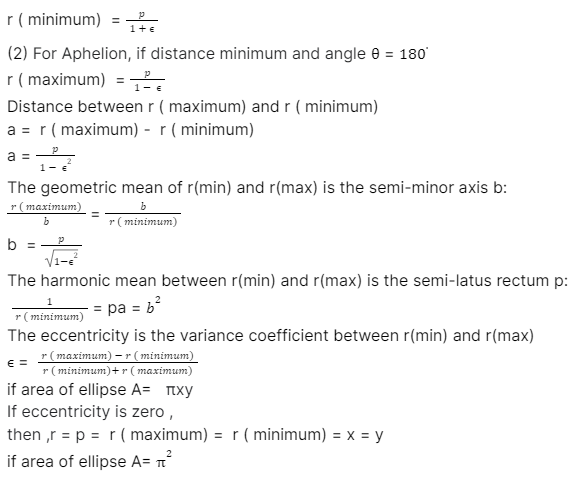Kepler’s first law is primarily concerned with gravity’s centripetal force, but it also includes a description of object motion in the presence of a central inverse square force. Apart from this, Kepler’s first law also accurately describes the prediction of the position and velocity of the planets at any time. With the help of this, the time of the satellite’s fall on the surface of a planet can also be found.
Kepler has propounded these laws after careful analysis of empirical data, which has no relation to pieces of Newton’s orbital mechanics. This law states that the motion of the planets takes place around the Sun in elliptical orbits, which are ellipses shaped like a flattened circle. This explains the flattened shape of the circle, expressed by its eccentricity. This singularity is a number between 0 and 1.
The Discoveries of Kepler
The circular orbits were discovered to be impractical by Johannes Kepler, a German astronomer. As a result, he examined celestial objects and their orbits, devising laws to demonstrate that the orbits were elliptical rather than circular. When Kepler was researching the orbital motions of the planet Mars, he discovered that they were elliptical or oval-like in shape.
The eccentricity of the orbit of Mars tells a perfect elliptical form. It’s also proof that additional planets orbiting farther from the Sun have elliptical orbits. In a letter, he explained his discovery to another astronomer, David Fabricius. On October 11, 1605, he penned his newfound finding; most of his works were published between 1605 and 1607.
The Law of Orbits: Kepler’s First Law
The principle of orbital law is based on Kepler’s first law. According to Kepler’s first law, all the planets revolve in their elliptical orbits, due to which the Sun is at one focus, and the other focus is empty. Planetary orbits are nearly round and difficult to detect by the human eye on a scale diagram.
The Assumption’s Justification
The orbits of the planets were supposed to be perfectly circular by the first astronomers who attempted to model the solar system. As a result, they created models that maintained flawless circular orbits. This is most likely why most people thought the orbits were circular. In Plato’s astronomical works, the orbits are likewise depicted as perfectly circular.
Effects of Kepler’s Law of Planetary Motion
Nicolaus Copernicus’ heliocentric theory is partially explained by Kepler’s first law of planetary motion. Copernicus was seeking to explain why the planets’ speeds fluctuated as they moved around the Sun. It was difficult for him to explain his discovery and produce evidence for it. Kepler’s use of the first law of planetary motion was correct to some extent, which was later proved.
Derivation
All planets orbit like an ellipse where the position of the Sun is located at one of the two centres.
The position of this ellipse of all the planets can be represented by the formula, which will have the mathematical form as follows:

Where,
P = Semi-latus rectum
ε = Eccentricity of the ellipse
r = Distance from the Sun to the planet
= From the planet’s closest approach, angle to its current position
(r, ) = Polar Coordinates
For an ellipse , 0 < ε < 1
ε = 0, ( the limiting case for , the Sun is at the centre of the orbit, which is a circle)
(1) For perihelion, if distance minimum and angle = 0.

The First Law of Kepler vs the Copernicus Model
Planets move in a circular orbit around the Sun, according to Copernicus. But according to Kepler, the motion of the planet around the Sun is in an elliptical orbit.
Because a circle is a special case of an ellipse, Copernicus’ model is based on one special situation; but Kepler’s rules are more of a general shape. Kepler’s law also provides information on the orbits that planets follow.
Application
These principles apply to the orbits of natural objects like planets, stars, and comets, as well as man-made instruments like rockets and satellites. Kepler’s laws were first devised in terms of planetary orbits, which follow the inverse square law for any radial force system.
Significance
According to Kepler’s First Law of Planetary Motion, a planet’s orbit is an ellipse, with the Sun at one of the two foci. The orbits that the planets move in are not circular, contrary to popular belief and understanding. The real form of the orbits is explained by Kepler’s First Law of Planetary Motion.
Conclusion
In classical mechanics, Kepler’s First Law is designed to explain the orbits of planets around the Sun or stars around the Milky Way, and it has been used to predict the orbits of many objects, including asteroids, comets, and dark stars in the Milky Way. In the finding of matter, this is crucial.
 Profile
Profile Settings
Settings Refer your friends
Refer your friends Sign out
Sign out






